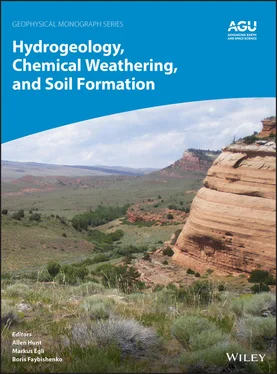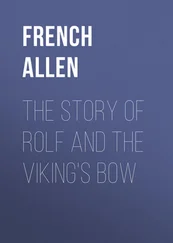1 ...8 9 10 12 13 14 ...17 Investigating the effect of landscape setting on pedogenesis requires a characterization of topography in three dimensions. Early attempts to describe the three‐dimensional character of topography was made by Andrew R. Aandahl (1948) and Frederick Troeh (1964). Later, geographers and geomorphologists explored methods of terrain description (e.g. Moore et al., 1991). Topographic attributes that appear to be important are those that apply to a two‐dimensional catena (elevation, slope, gradient, slope curvature, and slope length), plus those pertaining to three‐dimensional landform (slope direction, contour curvature, and specific catchment area).
In distilling previous work on digital soil models, Alex McBratney and his colleagues (2003) proposed that soil is a function of seven factors (the so‐called SCORPAN factors), as follows:

where S is soil ( Sc for soil classes or Sa for soil attributes or properties) at a point; s is existing soil information; c represents climate; o represents organisms or biological activity; r represents topographic or landscape attributes; p represents parent material; a represents age; n represents spatial position. Nathan Odgers et al. (2008) emphasized the strong influence of topography on soil characteristics and soil formation processes, noting that such topographic variables (terrain parameters, topographic attributes) as slope, landscape curvature, and flow direction are readily derived from a digital elevation model. They demonstrated how toposequences can be generated from such models.
Three‐dimensional topographic influences on soil properties were considered in small drainage basins by the present author (Huggett, 1973, 1975) and Willem J. Vreeken (1973), while André G. Roy and his colleagues (1980) considered soil–slope relationships within a drainage basin. Later work has confirmed that a three‐dimensional topographic influence does exist, and that some soil properties are very sensitive to minor variations in the topographic field (e.g. Moore et al., 1991, 1993; Fissore et al., 2017; Li et al., 2018; Iticha & Takele, 2018).
1.4.4. Soil‐Landscape Modeling
Soil‐landscape models seek to integrate soils, parent material, topography, land use and land cover, and human activities with the aim of understanding the spatial distribution of soil attributes, characteristics of soils, and their behavior through time (Grunwald, 2006, 6). They build on earlier soil models, starting with the factorial models instigated by Dokuchaev, Zacharov, and Jenny, and the later soil system models ( Table 1.1).
Soil landscapes are complex, involving geomorphological, biological, and hydrological processes acting over hundreds, thousands, or even millions of years. For this reason, understanding how soil landscapes function and evolve demands an interdisciplinary holistic approach and has benefitted hugely from the appearance of new and powerful technologies over the last few decades: satellite remote sensing, geographic information systems (GISs), global positioning systems (GPSs), digital elevation models (DEMs), and landscape evolution models (LEMs; cf. Brown, 2006). Pedologists have combined these technologies to tackle questions about soil landscapes. The value of digital terrain modeling to hydrology, geomorphology, and ecology was recognized by the early 1990s (e.g. Moore et al., 1991). More recently, pedometrics has attempted to integrate knowledge from numerous disciplines, including soil science, statistics, and GIS.
Early numerical models of landscapes in geomorphology included soil depth as a state variable (e.g. Ahnert, 1967; Armstrong, 1980). Huggett (1975) simulated the movement of solutes on slopes within a drainage basin. The model of the soil–landscape continuum built by Kevin McSweeney and his colleagues (1994) benefitted from technical advances made through linking hydrology and land‐surface form for terrain‐based modeling of hydrological processes. In their model of soil‐landscape systems, various sources of spatial data (e.g. vegetation and geological substrate) and attribute data (e.g. soil organic‐matter content and particle‐size distribution) are integrated through GIS technology. Four interrelated and iterative stages are applied in the model: physiographic domain characterization; geomorphometric characterization; soil horizon characterization; and soil property characterization. Many subsequent models have appeared, each adding refinements (e.g. Heimsath et al., 1997; Sommer, 2006; Vanwalleghem et al., 2013; Willgoose, 2018).
1.5. SOIL AS AN INTERDEPENDENT SYSTEM
Ideas about the interdependence of environmental factors were mooted in the late eighteenth century, principally by Johann Reinhold Forster and Alexander von Humboldt. Dokuchaev (1899) stressed the importance of interactions between the zones of the Earth, arguing a that a special discipline was needed to study the integrity of the natural sciences (geology, orography, climatology, botany, zoology) and offering genetic soil science (pedology) as a candidate for such a role (Bockheim & Gennadiyev, 2010). To be sure, his categorical statement of the factors of soil formation provided a basis for exploring in a formal way the connections between ecosystems and their environmental influences. The terrestrial spheres are not mentioned specifically in this formulation, but they are there by implication: climate involves the atmosphere and hydrosphere; animals and plants (plus the three kingdoms of micro‐organisms) are the biosphere; parent material is connected to the lithosphere; and relief is part of the toposphere.
Vladimir I. Vernadsky, a follower of Dokuchaev, made explicit the interconnectedness of the terrestrial spheres in his concept of the biosphere, a term he adopted from Eduard Suess after having read Die Antlitz der Erde (Suess, 1883–1909). Vernadsky (1926, 1929, 1998) developed original ideas on biogeochemistry and promulgated his own take on the biosphere, suggesting that living organisms and all life and life‐support systems (living organisms and their planetary environment) evolve together and form the media in which they live (air, water, soil, sediment). Some later workers argued that the biosphere should be confined to living things and the totality of life and life‐support systems be called the ecosphere (Cole, 1958; Gillard, 1969), a view to which the present author subscribes (see Huggett, 1999).
In 1938, Sante Mattson (1938) considered all possible interactions between the lithosphere, atmosphere, hydrosphere, pedosphere, and biosphere ( Figure 1.2). Three years later, Jenny listed the components of the ecosphere in his CLORPT equation, but his focus was the influence of environmental factors on soils and ecosystem properties rather than on the interrelationships between the environmental factors themselves.
With the advent of Earth systems science and the notion that “everything is connected to everything else,” a new integrative ecosystem approach emerged that addressed the interdependence of life, soils, climate, rocks, and relief ( Figure 1.3). The BRASH model was an attempt to express these interdependencies as a general dynamic systems equation (Huggett, 1991, 1995):

where xis a vector of all state variables describing the system considered, f( x) is a matrix defining interactions between the state variables, zis a vector of driving variables, and t is time. For the whole ecosphere, the state variables are biosphere, b , relief, r , atmosphere, a , hydrosphere, h , and zis external driving forces (geological or cosmic). Adding the five state variables to the general interaction matrix gives the BRASH equation:
Читать дальше














